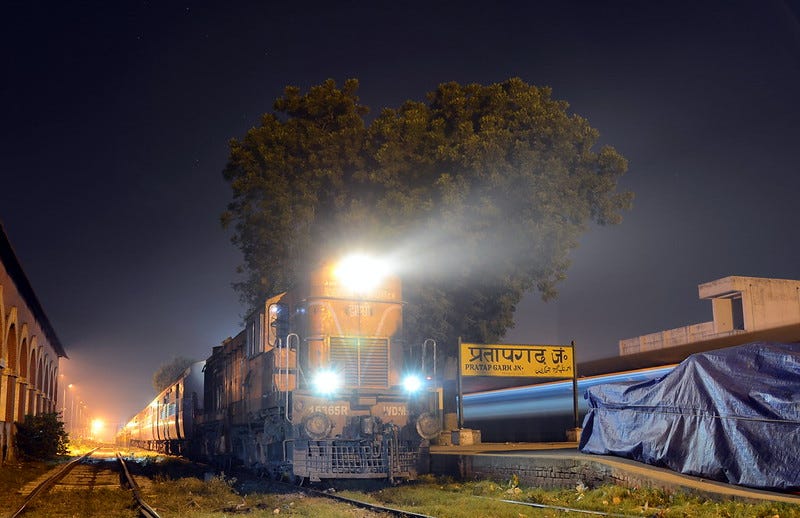Welcome to this weekend’s edition of Lights On, a newsletter that brings you the key stories and exclusive intel on energy and climate change in South Asia.
Hope you are having a relaxing Sunday, with time to catch up on last week’s important stories. On Wednesday, I published an analysis of what’s in India’s Union Budget for the sustainability sector - you can read it here.
Today’s newsletter is a bit different: I have my first ever guest post, from energy expert Kasturi Sukhapure, who has been tracking the ins and outs of India’s energy journey from the UK.
If you like my work and want to support Lights On, you can become a member for $7 a month or $70 a year. Students get 60 percent off forever.

Steelmaking, cement and heavy transport are key industries for India’s development, but they are also among the hardest to decarbonise. As India strives to transition away from fossil fuels, these sectors pose a unique challenge for the country, because they are both essential for the economy and a growing source of emissions.
Currently, about two third of India’s emissions are from the energy sector, which is still dominated by fossil fuels. According to the Energy Transitions Commission the total electricity consumption in India will need to increase almost five fold just to meet India’s growing need for cooling and the electrification of the transport sector, including two-wheelers, cars, buses and trains.
What’s at stake
This demand will increase even further as the country sets out to electrify its heavy industry. India has one of the highest emissions intensities in the industry sector amongst G20 countries, which means for each unit of industrial output it needs more energy than its peers in the group. The government has been addressing the problem through a carbon trading scheme known as Perform Achieve and Trade (PAT), but there’s still a long way to go if India hopes to develop on a pathway consistent with keeping global warming below 1.5°C. To meet this target industrial emissions from G20 countries need to reduce by as much as 90 percent by 2050 compared to 2010 levels, according to the Climate Transparency Report 2020.
Tackling sectors that are hard to decarbonise is particularly important for India, with its rapidly growing economy and plans to build significant amounts of infrastructure over the coming years. It’s a feat that will make or break some of the government’s key carbon targets - particularly the promise to reduce overall emissions intensity by up to 35 percent by 2030 compared to 2005.
Accelerating progress
Does India already have what it takes to revolutionise its heavy industry? Decarbonising heavy industry and transport will require a steep advancement of existing technologies and innovation, something that many countries might struggle to do on their own. The Paris Agreement architecture, which is focused on individual country pledges, was not set up to implement coordinated global strategies so countries are coming together through different platforms. One such initiative, the Mission Possible Partnership, a coalition of organisations and companies, was launched last week with a focus on decarbonising the world's highest emitting industries. It aims to coordinate action on heavy-emitting industries, particularly those that are inherently cross-border, such as aviation and shipping.
The partnership targets seven main sectors - aluminium, aviation, cement and concrete, chemicals, shipping, steel and trucking, which together represent 30 percent of the total global emissions.
It builds on the research of the energy transition branch of the World Economic Forum, which last year published a report urging governments and industry to accelerate deployment of zero-carbon solutions. The report notes that to keep global warming within 1.5C above pre industrial levels, developed countries will need to achieve full decarbonisation by 2050, giving developing countries an additional decade to get there. However, some developing economies may get to the finish line even earlier, if they can leapfrog and build zero-carbon energy systems "right the first time". India can be one of them.
Electrifying everything
In decarbonising the energy system, experts suggest that countries should first electrify as much of their energy systems as possible, and then use hydrogen where electrification is very expensive or technically difficult. Carbon capture and storage should only be used as a last resort. Globally, direct electrification could contribute to up to 70 percent of final energy demand by 2050. For India, this would mean rapidly scaling up its clean power system not only to replace existing fossil fuel power generation but also to decarbonise parts of the transport and industry sectors. Analysis shows that India can build a cost-effective zero-carbon power grid by 2050 capable of meeting increased demand. But to meet this goal, a new wave of zero-carbon technologies will have to be brought to the market by the end of this decade at the latest.
The last ten years has seen enormous cost-reduction in renewable energy driven by innovation, collaboration and deployment. This was arguably a key factor behind the success of the 2015 Paris Agreement - giving countries the confidence that a low carbon future was both possible and affordable. The next step is for a similar level of international collaboration to decarbonise heavy industry and transport sectors too.
Kasturi is an energy advisor for Mott MacDonald, a global engineering, management and development consultancy. Her work focuses on renewable energy, climate change and energy innovation. Kasturi is from Pune and has lived in the UK for the last 8 years. She writes for Lights On in a personal capacity.
That’s all for today! If you like what you read, please consider signing up for free or as a member:



